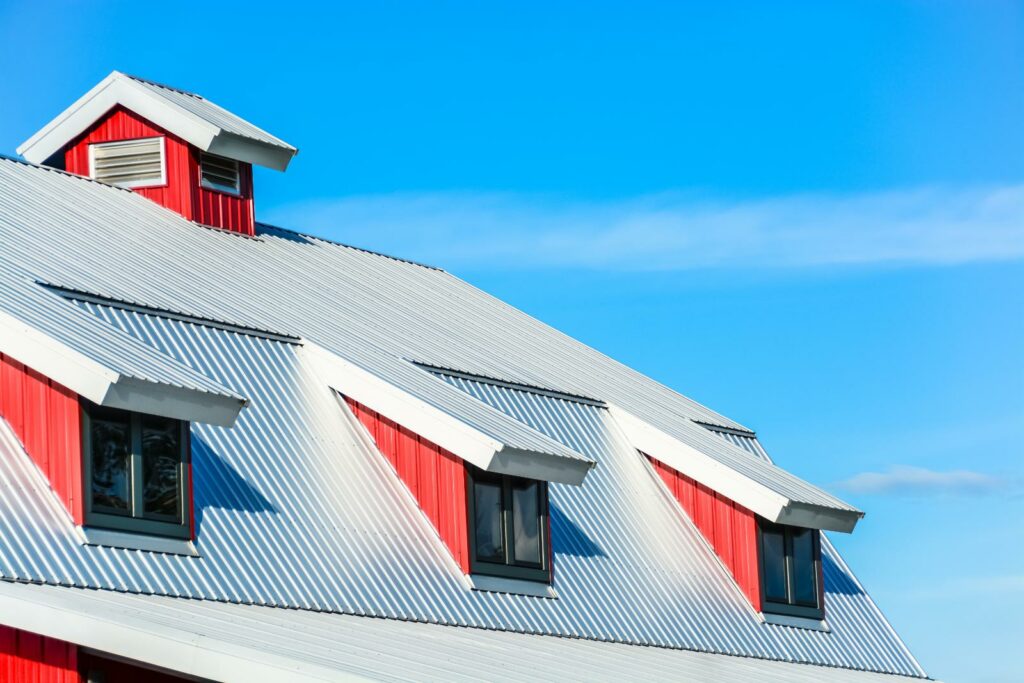
Contents
When it comes to assembling a metal garage, the task may seem daunting at first glance but fear not—with the right guidance, it can be a manageable project.
You can navigate the assembly smoothly by following a systematic approach and breaking down the process into clear steps.
From preparing the site to adding the finishing touches, each step plays a crucial role in ensuring a sturdy and well-constructed metal garage.
So, let’s begin by exploring the first essential step in this process.
Key Takeaways
- Proper pre-assembly preparation is crucial for successful metal garage assembly
- Ensuring precise foundation and frame setup is essential for structural integrity
- Attention to detail during wall and roof installation is key for durability and weather resistance
- Completing final touches and weatherproofing measures enhances the longevity and functionality of the metal garage
Site Preparation
Before assembling your metal garage, ensure the site is properly prepared to facilitate a smooth installation process. Start by addressing any drainage solutions needed to prevent water accumulation around the garage. Proper grading and installing drainage systems like French drains can help mitigate water-related issues. Additionally, gravel leveling should be considered to create a stable base for the garage structure. Leveling the gravel ensures a uniform surface, which is crucial for the stability and longevity of your metal garage.
When preparing the site, take into account landscaping concerns that may affect the assembly process. Trim any overhanging branches or bushes that could interfere with the installation or potentially damage the structure over time. Clearing the area of debris and ensuring there are no underground roots will prevent future landscaping problems.
Utility access is another essential aspect to consider during site preparation. Ensure easy access to utilities like electricity if you plan on adding lighting or power sources to your metal garage. Understanding where utility lines are located can prevent accidents during the installation process and make future maintenance more manageable.
Foundation Installation
To begin the foundation installation process for your metal garage, you’ll find essential site preparation tips, an overview of the required materials, and a detailed step-by-step guide for the installation.
This comprehensive approach ensures that you have all the necessary information and resources at your disposal to lay the foundation for your metal garage successfully.
Site Preparation Tips
Prepare the site by excavating the area according to the dimensions specified in the metal garage assembly instructions. Proper drainage management is essential to prevent water accumulation near the foundation. Consider landscaping aspects to enhance the overall appeal of your metal garage area. Below is a table summarizing key site preparation tips:
| Site Preparation Tips | Description | Importance |
|---|---|---|
| Excavation | Dig according to specs | Ensures proper foundation |
| Drainage Management | Proper water flow | Prevents water damage |
| Landscaping | Aesthetics and function | Enhances overall look |
Make sure to follow these steps for a successful metal garage assembly.
Materials Needed Overview
To start the foundation installation process for your metal garage assembly, gather the necessary materials listed in the assembly instructions. When selecting materials, consider budget constraints to ensure cost-effectiveness. Prioritize safety by following precautions and proper tool usage throughout the installation. Here are some key points to keep in mind:
- Concrete mix: Choose a high-quality concrete mix suitable for your foundation size.
- Rebar: Reinforcing bars are essential for adding strength to the concrete foundation.
- Leveling tools: Ensure a flat and level foundation using tools like a level and a screed.
- Safety gear: Prioritize safety with gear such as gloves, goggles, and sturdy footwear.
- Shovel and wheelbarrow: These tools are necessary for mixing and moving concrete during the foundation installation.
Step-By-Step Installation Guide
Ensure your concrete foundation is properly set by following these step-by-step installation instructions.
Before starting, remember safety precautions: wear appropriate gear like gloves and safety goggles. Check the weather forecast; avoid working in extreme conditions.
Begin by marking the area where the foundation will be poured, ensuring it’s level and square. Excavate the marked area to the required depth, typically around 4 inches. Compact the soil and add a layer of gravel for drainage.
Create a formwork using wooden boards to contain the concrete. Install rebar for added strength. Mix and pour the concrete, ensuring it spreads evenly. Use a screed board to level the concrete.
Let it cure as per the manufacturer’s instructions before proceeding with the garage assembly.
Frame Assembly
Begin by aligning the frame components according to the provided instructions for proper assembly. Proper frame alignment is crucial for the structural integrity and stability of your metal garage. Here are some key points to consider during the frame assembly process:
- Check Alignment Marks: Ensure that all frame components have alignment marks to guide you during assembly.
- Use Leveling Tools: Utilize a level to make sure the frame is aligned both vertically and horizontally.
- Secure Joints Properly: Align joints carefully before tightening bolts to avoid misalignment.
- Double-Check Measurements: Confirm measurements according to the manual to guarantee correct alignment.
- Follow Sequence: Assemble the frame in the specified order to maintain alignment integrity.
When tightening bolts during frame assembly, remember to apply consistent pressure to achieve proper torque. Avoid over-tightening, as this can lead to damage or misalignment. It’s important to strike a balance between secure connections and not putting excessive pressure on the frame components. By following these steps diligently, you’ll ensure that your metal garage frame is correctly aligned and securely assembled.
Wall Panel Installation
During the wall panel installation phase of your metal garage assembly, maintaining the alignment established in the frame assembly is critical for a sturdy and secure structure. Panel placement must be precise to ensure a seamless fit. Begin by placing the first wall panel at a corner and aligning it with the edges of the frame. Use self-tapping screws to secure the panel to the frame, ensuring it’s flush and level.
Once the first panel is securely fastened, continue placing the subsequent panels, ensuring each panel interlocks correctly with the previous one. This interlocking mechanism enhances the structural integrity of the walls. Pay close attention to the alignment of the panels to avoid any gaps or overlapping that could compromise the overall stability of the garage.
When all panels are correctly placed, proceed with panel fastening. Utilize the recommended screws or bolts provided in the assembly kit to fasten the panels securely to the frame. Work methodically along the length of each wall, securing the panels at regular intervals to prevent any warping or shifting over time.
Regularly check the alignment and levelness of the panels as you progress to maintain a uniform and structurally sound assembly. Following these precise panel placement and fastening techniques will ensure a well-constructed metal garage that provides durability and security for your belongings.
Roof Installation
For a secure and weather-resistant metal garage structure, the roof assembly is a crucial step in the construction process. When it comes to roof installation, using the right roofing materials and ensuring proper weather protection are key factors in creating a durable and long-lasting metal garage.
Tips for Roof Installation:
Choose Quality Roofing Materials: Selecting the appropriate roofing materials, such as metal panels or shingles, is essential for ensuring the longevity of your metal garage roof.
Proper Weatherproofing: Apply weatherproof sealant around all roof penetrations, like screws and seams, to prevent water leaks and enhance weather protection.
Secure Roofing Panels Correctly: Ensure each roofing panel is securely fastened to prevent wind uplift and water infiltration, enhancing the overall structural integrity.
Check for Proper Drainage: Make sure the roof is sloped correctly to allow water drainage and prevent pooling, which can lead to water damage over time.
Inspect Regularly: Periodically inspect the roof for any signs of damage or wear and promptly address any issues to maintain the weather resistance of your metal garage structure.
Door and Window Setup
Now, ensuring seamless integration with the previously assembled roof structure, the focus shifts to the critical task of setting up doors and windows for your metal garage. Proper window placement is essential for both natural light and ventilation. Begin by fitting the window frame securely into the designated opening, ensuring it’s level and plumb. Use shims to make necessary adjustments for a perfect fit. Once the frame is in place, secure it by screwing it into the metal structure, ensuring stability and weatherproofing.
When it comes to door hardware, precision is key. Start by attaching the hinges to the door frame, ensuring they’re evenly spaced. Then, attach the door to the hinges, checking for smooth operation and proper alignment. Install the doorknob and lockset according to the manufacturer’s instructions, ensuring they’re securely fastened. Test the door to ensure it opens and closes smoothly without any obstructions.
For windows, ensure the panes are securely in place and seal any gaps with weather stripping to prevent drafts. Additionally, consider adding window locks for security. As for the doors, make sure they’ve proper weather seals to keep out moisture and pests. By following these steps meticulously, you’ll have a metal garage with doors and windows that are functional, secure, and weather-resistant.
Insulation and Vapor Barrier
To effectively insulate your metal garage and establish a reliable vapor barrier, prioritize selecting materials with high R-values to ensure optimal thermal efficiency and moisture control. Insulation plays a crucial role in maintaining a comfortable environment inside your garage while also protecting it from potential moisture damage. When considering insulation options, it’s essential to choose wisely to maximize the benefits for your space.
Insulation and Moisture Protection Tips:
- Consider Spray Foam Insulation: Spray foam provides excellent coverage, filling all gaps and crevices to create a seamless barrier against heat loss and moisture infiltration.
- Opt for Fiberglass Insulation: Fiberglass batts are cost-effective and easy to install, offering decent thermal resistance and moisture control when installed correctly.
- Explore Reflective Insulation: Reflective insulation, with its shiny surface, helps to reflect heat away and can be a great option for reducing radiant heat transfer.
- Install a Vapor Barrier: A vapor barrier, such as polyethylene sheeting, is essential to prevent moisture from seeping into the insulation and causing potential damage over time.
- Seal Joints and Gaps: Sealants or tapes are used to seal any joints or small gaps in the insulation to enhance its effectiveness in providing both thermal insulation and moisture protection.
Finishing Touches
To complete your metal garage assembly, it’s time to focus on the finishing touches.
Start by painting and sealing the interior walls for protection and aesthetics.
Organize your storage solutions efficiently and consider adding lighting to enhance visibility and functionality.
Paint and Seal
Consider applying a protective coat of paint and sealant to enhance the durability and appearance of your metal garage structure. Before starting the painting process, ensure the surface preparation is thorough to prevent corrosion and ensure proper adhesion of the paint. Here are some key points to keep in mind:
Surface Preparation: Clean the metal surface, remove any rust spots, and consider using a primer for better adhesion.
Corrosion Prevention: Apply a rust-inhibiting primer before painting to protect the metal from corrosion.
Color Selection: Choose a paint color that not only suits your style but also provides weather protection.
Weather Protection: Opt for a high-quality exterior paint that can withstand different weather conditions.
Sealant Application: Finish off with a sealant to protect the paint and enhance longevity.
Organize Storage
Enhance the functionality and aesthetics of your metal garage structure by efficiently organizing storage spaces as a final touch to your assembly process. Maximizing space within your metal garage is key to keeping your tools and equipment easily accessible yet neatly stored.
Consider utilizing wall-mounted shelves, pegboards, and overhead racks to make the most of vertical space. An efficient layout is crucial; group similar items together and label storage bins for quick identification. Make use of drawer organizers and tool chests to keep small items in order. Utilize magnetic strips for organizing metal tools.
Add Lighting
How can you optimize the lighting in your metal garage to ensure functionality and safety? Proper lighting is essential for a well-functioning garage space. Here’s how you can enhance the lighting in your metal garage:
- Choose the right lighting fixtures: Select LED lights for energy efficiency and brightness.
- Strategically place the fixtures: Install lights in key areas like workbenches and storage spaces for optimal visibility.
- Consider natural light sources: Maximize natural light with windows or skylights where possible.
- Ensure safe electrical wiring: Hire a professional to handle electrical wiring to prevent hazards.
- Use motion-sensor lights: Enhance security and convenience by incorporating motion-sensor lights for automatic illumination.
Summary
Following these six steps for metal garage assembly will ensure a sturdy and functional structure for your property. Proper site preparation, foundation installation, frame assembly, wall and roof installation, as well as door and window setup are crucial for a successful build.
Don’t forget to add insulation and a vapor barrier for added protection. With attention to detail and careful execution, your metal garage will be a durable and reliable addition to your property.
Recent Posts
5 Best Durable Metal Garages for Longevity
Imagine your garage as the backbone of your property, supporting everything from tools to vehicles,
3 Tips for Durable Metal Garages
Is it true that the longevity of your metal garages hinges on just a few
Why Choose Versatile Metal Options for Storage?
It’s interesting how you might find yourself needing a reliable storage solution just as you’re




